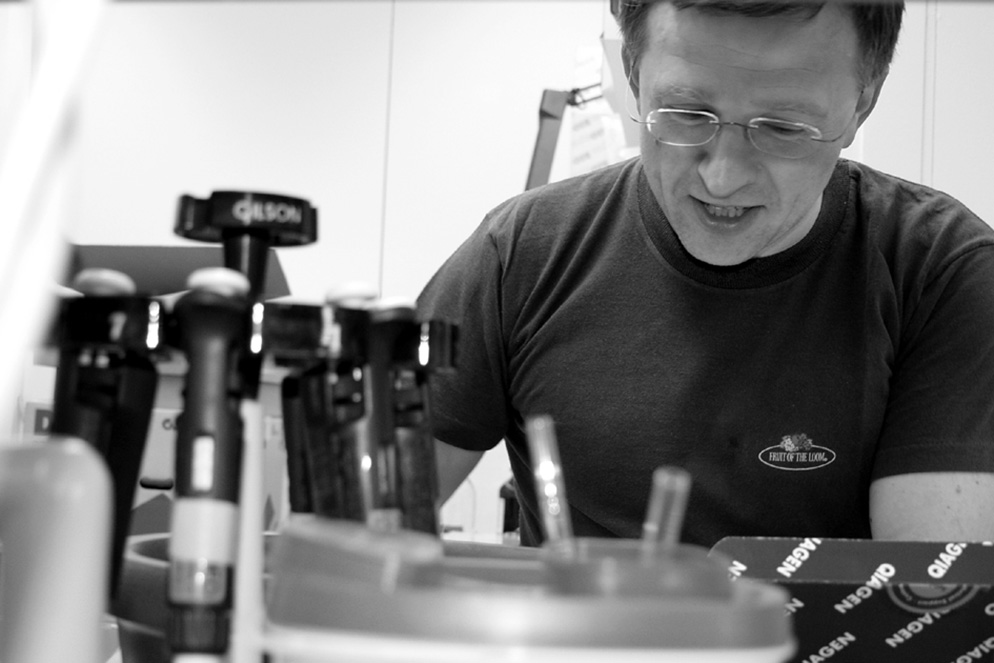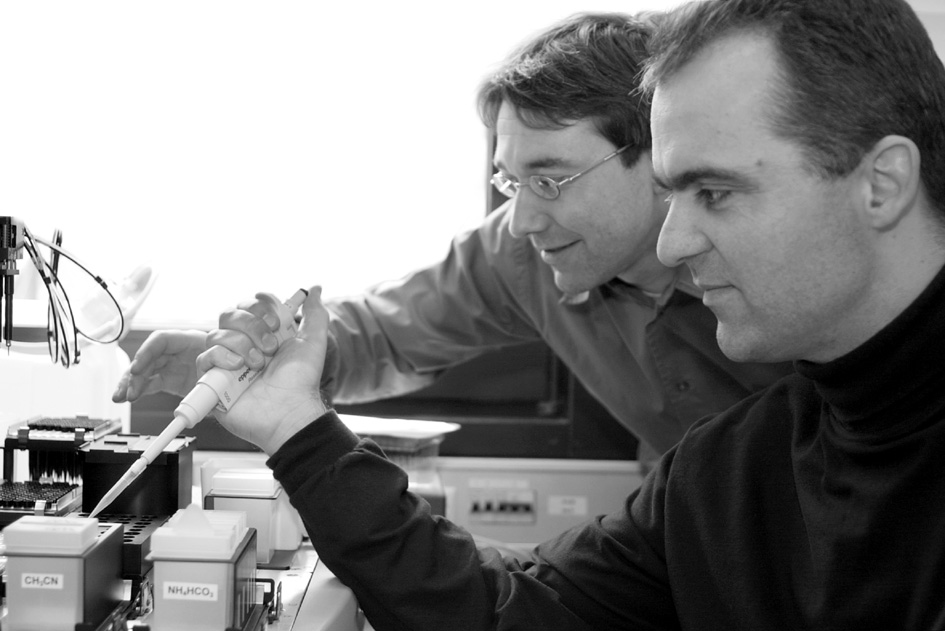Flashback Friday: Doors open at genomics and proteomics core facilities

EMBL celebrates its 50th anniversary in 2024, and in so doing, we’re digging through the archives for some fascinating stories from EMBL’s past publications to publish in this blog.
By Russ Hodge, Head of EMBL Office of Information and Public Affairs, 1997-2006
The following is an EMBLetc. article from Issue 8 in August 2001.
Operations are getting underway at two new EMBL ‘core facilities’, designed to provide important services to groups at the Laboratory, EMBL visitors, and collaborators.
The Genomics Core Facility, headed by Vladimir Benes, is already performing limited DNA sequencing, SAGE, and DNA chipmaking services. The Proteomics Facility is overseen by Matthias Wilm; Thomas Franz is in charge of day-to-day operations. Here, researchers will use a complete, state-of-the-art proteomics line called ProteomeWorks, provided by the companies Micromass and Bio-Rad.
One reason that EMBL has developed the facilities is the desire to draw a cleaner line between research and service activities. “In order to pursue our strong focus on functional genomics the Laboratory needs some very powerful services, able to cope with high demand and high throughput,” says Christian Boulin, coordinator of Scientific Facilities. “In the instrumentation groups, distinguishing these from research will enable us to give each type of activity adequate support and to manage them professionally.”
 “The set-up they have installed is unique in the world: it includes two mass spectrometry machines, all the robotics and all the computing facilities needed to handle the work of protein analysis. We hope this will be a prototype for partnerships with other companies.”
“The set-up they have installed is unique in the world: it includes two mass spectrometry machines, all the robotics and all the computing facilities needed to handle the work of protein analysis. We hope this will be a prototype for partnerships with other companies.”
Micromass and Bio-Rad are sponsoring a complete suite of equipment for a Visitor Proteomics Facility,” Boulin says. “The set-up they have installed is unique in the world: it includes two mass spectrometry machines, all the robotics and all the computing facilities needed to handle the work of protein analysis. We hope this will be a prototype for partnerships with other companies.”
The Proteomics Facility follows in the footsteps of the Advanced Light Microscopy Facility (ALMF) managed by Rainer Pepperkok and his team, in that the equipment has been contributed by industry. According to John Rontree, Sales and Marketing Director of Micromass, such arrangements benefit both partners.
“Gaining direct access to leading scientists working with a proteomics line is strategically important to us,” Rontree says. “By listening to their needs, we can gain the knowledge necessary to maintain a position at the forefront in providing total proteomics solutions.”
Benes says that the Genomics Facility will become fully operational when it moves to its permanent home on the fourth floor in October. It, too, is relying on industrial partnerships, including support from Amersham Pharmacia and Packard Biosciences.

“The concept is similar to what is being done in some of the other facilities,” Benes says. “The new lab will have space for visitors who can use the equipment and receive training; we’ll provide support to the Young Investigators programme, and we’ll be open to scientists in the EMBL member states via collaborations and our visitor’s programme. We also want to serve as a beta-testing site where companies can put new methods and equipment into place and have them tested by scientists working on very interesting problems.”
This article was originally published in EMBLetc., Issue 8 in August 2001. EMBL’s commitment to developing and providing cutting-edge services to the life sciences research community has continued to grow, including a state-of-the-art EMBL Imaging Centre that became operational in 2022. Read other news articles about EMBL core facilities here.